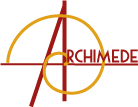Abstract
Title: Typology, analogy and the construction of funerary identities on Roman mythological sarcophagi (2nd-4th century AD)
The sarcophagi that were in use in the Roman Empire from the 2nd century AD onwards were valuable means of expressing identities. The semantic flexibility characterising in particular the mythological scenes sculpted on those sarcophagi allows for multiple interpretations, as the message conveyed was adapted to the wishes of the deceased and their relatives. The analogical approach consists in studying the connections and assimilations that came to exist between mythological models and real identities, through practices such as that of portrait heads. The typological approach proceeds from the fact that certain visual patterns, such as the “sleeper” motif, combining initially distinct characters or narratives, are found repeatedly in the corpus. Combining analogy and typology makes it possible to understand the iconographic strategies that led to constructing funerary identities.
Keywords: Roman sarcophagi, mythology, identity, analogy, iconographic typology.




